lisapathfinder
Latest
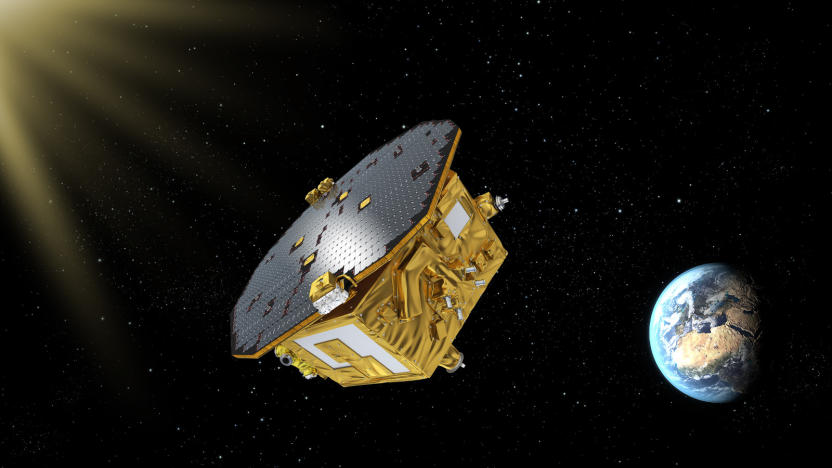
The ESA's hunt for gravitational waves is over, for now
On July 18th, 2017 at around 2PM Eastern time, Professor Stefano Vitale sent the LISA Pathfinder its final kill commands from the mission's control center in Germany. The lead investigator's instructions prompted the probe to reboot itself and run a corrupted version of its software. That ensures that the spacecraft will harmlessly orbit the sun without colliding into other probes. Before the ESA powered down Pathfinder, though, it was able to meet and even exceed all the agency's objectives.

NASA seeks comet 'crumbs' with a new detection technique
It's relatively trivial to spot comets, but spotting the dust they leave behind? That's no mean feat -- it's like tracking grains of fast-moving sand on a cosmic-scale beach. NASA, however, might just have a way of mapping that dust. It's developing a technique that would use the movement of the ESA's LISA Pathfinder probe to detect the minuscule "crumbs" left by comets and asteroids. The trick involves tracking the tiny thruster bursts Pathfinder uses to compensate for dust stream impacts. When you measure the direction and strength of those bursts, you can get a good sense of the dust's impact location, size and trajectory.
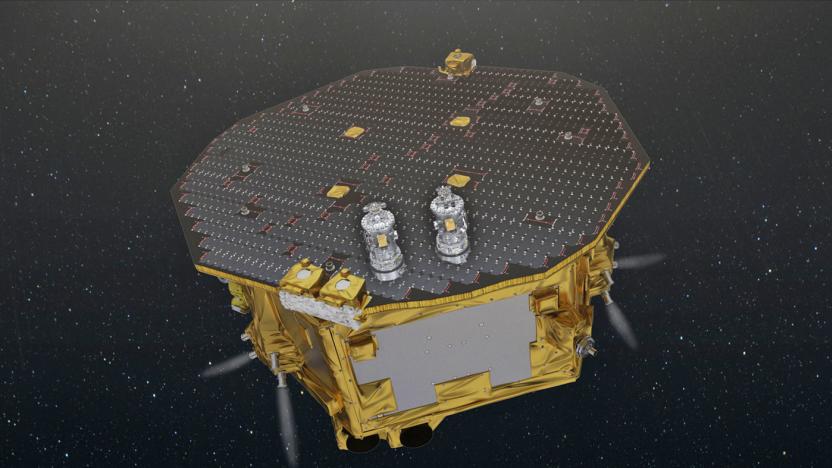
NASA plans to rejoin the ESA's gravitational waves project
NASA was supposed to be the European Space Agency's partner in the quest to measure gravitational waves, but it had to drop out in 2011 due to budgetary constraints. According to Science, though, NASA officials changed their minds after a team of scientists confirmed the existence of these distortions in the fabric of space-time. At the 11th symposium to discuss the status of ESA's Laser Interferometry Space Antenna (LISA) project, NASA said it wants to patch things up with its European counterpart and rejoin the mission as a major partner.

ICYMI: Gravitational waves and holographic Holocaust memory
try{document.getElementById("aol-cms-player-1").style.display="none";}catch(e){}Today on In Case You Missed It: NASA's mission to figure out where black holes are located won't actually deploy until 2034, but the science behind the sound experiment is being worked on now. University of Southern California's Institute for Creative Technologies created a 3D video rig to capture people's memories, saving the video and sound mash-up for future generations to hear first-hand accounts of the Holocaust. The "In Good Company" shoe for turning off phone notifications automatically is here; in case you're interested in the human ancestor story, NPR has a good summary here. As always, please share any great tech or science videos you find by using the #ICYMI hashtag on Twitter for @mskerryd.
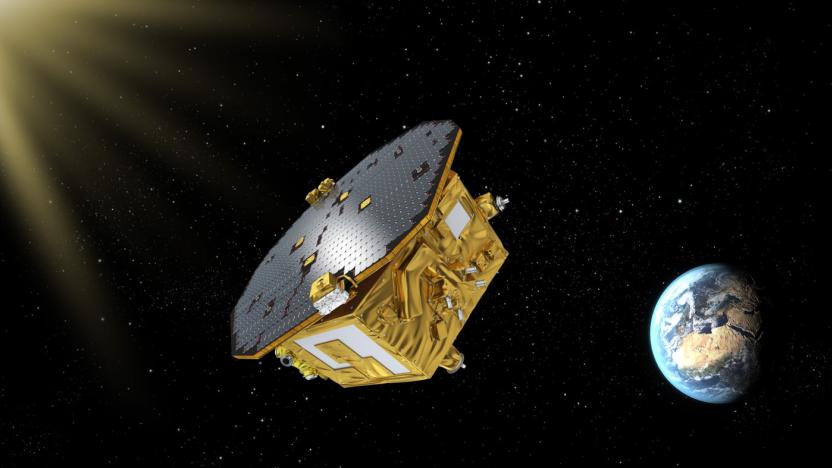
LISA Pathfinder 'listens' to the universe while in freefall
Back in December, the European Space Agency (ESA) launched the Laser Interferometer Space Antenna (LISA) Pathfinder spacecraft. Today, it's finally positioned itself in gravitational stasis at the first Langrangian Point (L1) that lets its instruments hang in freefall. This will hopefully filter out extraneous cosmic noise so the spacecraft can achieve its mission: measuring gravitational waves, the "sound" of the universe.

Watch the European Space Agency launch LISA Pathfinder
Albert Einstein predicted gravitational waves as a part of his Theory of Relativity, and in order to better understand them, the ESA is about to launch its Lisa Pathfinder mission. This is a small-scale test run for the actual measuring equipment slated to launch in 2034, intended to prove that its instruments can reach the required level of precision. The launch will take place shortly from the Kourou spaceport in French Guiana, and you can watch the video live streamed right here.
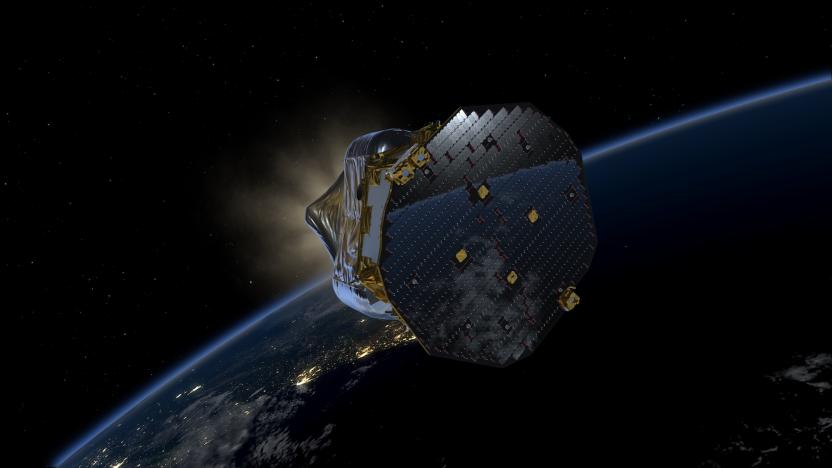
Watch ESA explain how it plans to find gravitational waves
In just under a week the European Space Agency (ESA) will launch its LISA Pathfinder spacecraft on a Vega rocket. Buried within the vessel are two cubes made of gold-platinum which, scientists hope, can lay the groundwork for measuring gravitational waves in space. The theories and testing procedures can be tricky to wrap your head around, but thankfully the ESA has made some explainer videos (below) to help you out.
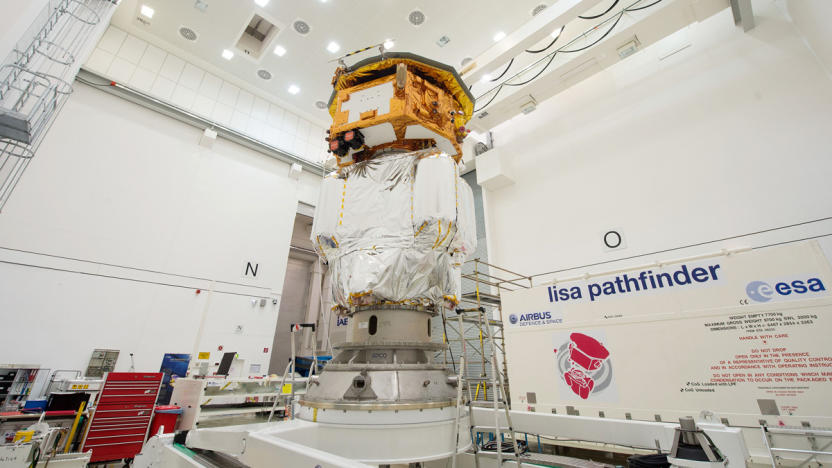
ESA craft will prove that you can measure gravity waves in space
Scientists have spent ages searching for gravity waves from the safety of Earth, but they haven't had the chance to study those waves in space, where they could help make sense of black holes and other objects that distort spacetime. They're one step closer to getting that shot, though. The European Space Agency is almost ready to launch a vehicle, LISA Pathfinder, that will demonstrate the viability of measuring gravity waves in space. When it begins testing in March, Pathfinder won't actually measure gravitational effects at all. It'll instead look for extremely minute (picometer-level) changes between two test masses within the spacecraft, proving that you can achieve the extreme level of precision needed for a gravity wave detector.





